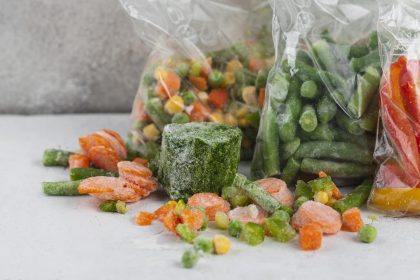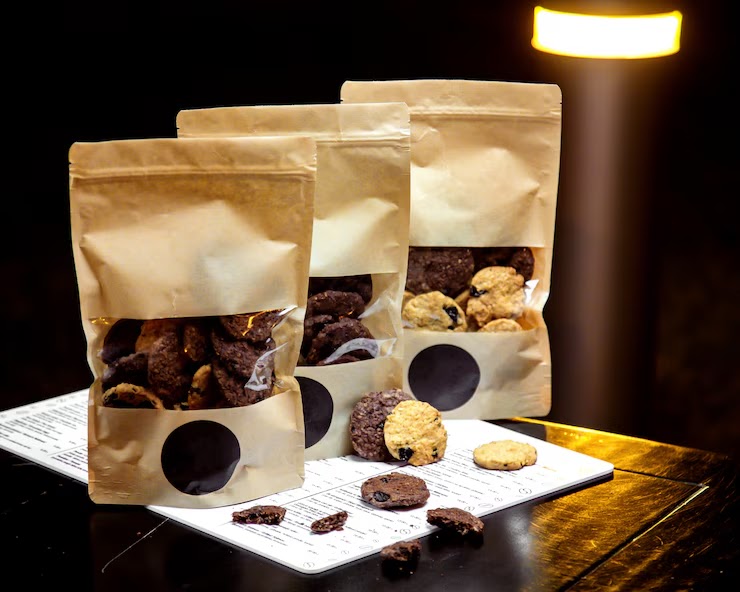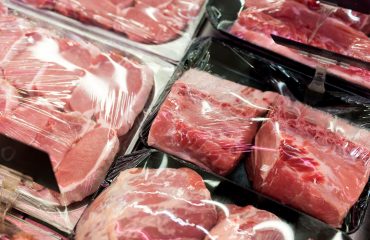The Science Behind Oxygen Barrier Films: How They Keep Food Fresher for Longer

In the world of food preservation, packaging plays a crucial role in maintaining product freshness, extending shelf life, and reducing waste. One of the most significant advancements in this field is the development of oxygen barrier films, which help prevent spoilage by limiting oxygen exposure. These films are widely used in flexible packaging films and food packaging pouch solutions, ensuring that perishable items remain fresh for as long as possible. But how do these films work, and why are they so effective? Let’s explore the science behind oxygen barrier films and their impact on food packaging.
Understanding Oxygen’s Role in Food Spoilage
Oxygen is essential for life, but when it comes to food storage, it can be a major culprit in spoilage. The presence of oxygen inside packaging can lead to:
- Oxidation: Oxygen reacts with fats and oils in food, causing rancidity and off-flavours. This is particularly problematic for snacks, dairy products, and ready-to-eat meals.
- Microbial Growth: Certain bacteria and moulds thrive in oxygen-rich environments, accelerating food decay and leading to contamination.
- Colour and Texture Degradation: Many foods, such as fresh meats and dairy, change colour and texture when exposed to oxygen, making them less appealing to consumers.
Oxygen barrier films are designed to combat these issues by significantly reducing the amount of oxygen that comes into contact with food products.
How Oxygen Barrier Films Work
Oxygen barrier films are engineered with multiple layers, each serving a specific function in protecting food. The key layers include:
1. Barrier Layer
This layer is responsible for preventing oxygen from passing through the packaging. Materials like Ethylene Vinyl Alcohol (EVOH), Polyvinylidene Chloride (PVDC), and metallised coatings are commonly used due to their excellent oxygen-blocking properties.
2. Structural Layer
This provides strength and flexibility, ensuring that the packaging maintains its shape and integrity during handling and storage. Common materials include polyethylene (PE) and polypropylene (PP).
3. Sealant Layer
This layer ensures airtight sealing, preventing leaks and oxygen ingress at closure points. Heat-sealable polymers like polyethylene and ionomer-based resins are often used.
By combining these layers, flexible packaging solutions can offer superior protection against oxygen, keeping food fresh and safe for extended periods.
Applications of Oxygen Barrier Films in Food Packaging
Oxygen barrier films are widely used across various food industries. Some of their most common applications include:
1. Snack and Confectionery Packaging
Crisps, nuts, and chocolates are highly sensitive to oxygen exposure. Barrier films prevent oxidation, maintaining flavour and crunchiness.
2. Dairy and Cheese Packaging
Cheese and dairy products are prone to spoilage due to microbial growth. Oxygen barrier films help extend their shelf life without the need for excessive preservatives.
3. Fresh Meat and Seafood Packaging
Vacuum-sealed and modified atmosphere packaging (MAP) for fresh meats uses barrier films to slow oxidation and maintain color and texture.
4. Coffee and Tea Packaging
Oxygen accelerates the staleness of coffee and tea. High-barrier films protect aroma and flavor by minimising air exposure.
5. Frozen and Ready-to-Eat Meals
Pre-packaged frozen foods benefit from oxygen barrier films as they prevent freezer burn and keep meals fresh for extended storage periods.
For a deeper dive into the role of oxygen barrier films in food packaging, refer to research by the Australian Institute of Packaging, the Institute of Food Technologists, and ScienceDirect.
The Future of Oxygen Barrier Films in Sustainable Packaging
While traditional oxygen barrier films provide excellent protection, sustainability is becoming a key concern in food packaging. Researchers and packaging manufacturers are exploring new materials that maintain high oxygen resistance while being environmentally friendly. Some innovations include:
- Biodegradable and Compostable Barrier Films: Made from plant-based polymers, these films offer eco-friendly alternatives to conventional plastic films.
- Recyclable Multi-Layer Films: Advances in mono-material films with high oxygen barrier properties allow for easier recycling.
- Active Packaging Technologies: Some films are being developed with oxygen scavengers that absorb residual oxygen, further enhancing freshness.
Why Oxygen Barrier Films Are Essential for Food Packaging
Oxygen barrier films are a critical innovation in food preservation, helping to extend shelf life, maintain quality, and reduce food waste. Whether used in flexible packaging films for snacks or a food packaging pouch for dairy and meats, these high-performance materials continue to shape the future of food packaging. As sustainability concerns drive further advancements, we can expect even more eco-friendly and efficient solutions in the years ahead.
Frequently asked questions (FAQs) about flexible packaging films and oxygen barrier films in food packaging:
2. What materials are commonly used in oxygen barrier films?
Common materials include Ethylene Vinyl Alcohol (EVOH), Polyvinylidene Chloride (PVDC), and metallised coatings, which have excellent oxygen-blocking properties. These materials are often combined with polyethylene (PE) or polypropylene (PP) for structural strength and sealing efficiency.
3. How do oxygen barrier films improve food shelf life?
These films slow oxidation and microbial activity by creating a multi-layer barrier that prevents oxygen penetration. This is especially beneficial for snacks, dairy, meats, coffee, and ready-to-eat meals, as they keep them fresh for extended periods without excessive preservatives.
4. What types of food products benefit the most from oxygen barrier films?
Foods susceptible to oxygen exposure, such as:
- Snacks and confectionery (to prevent staleness)
- Dairy and cheese (to reduce spoilage)
- Fresh meat and seafood (to maintain color and texture)
- Coffee and tea (to preserve aroma and flavor)
- Frozen and ready-to-eat meals (to prevent freezer burn)
5. What is the difference between standard flexible packaging films and oxygen barrier films?
Standard flexible packaging films provide basic protection and convenience, while oxygen barrier films incorporate specialised layers to block oxygen and preserve food quality. Barrier films are essential for perishable goods that require extended shelf life and enhanced freshness.






You must be logged in to post a comment.